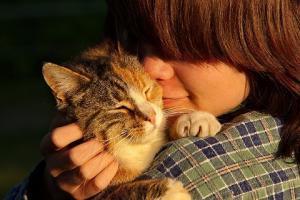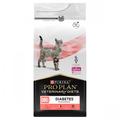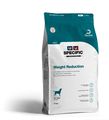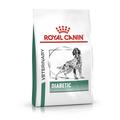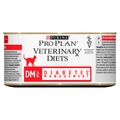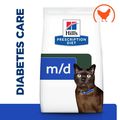The health of a diabetic pet is determined by appropriate medical treatment and an informed, dedicated owner. This is the third post for Pet Diabetes Month, and the time has come to focus on what needs to be done to ensure diabetic pets lead healthy and normal lives with their families.
The main aim with managing diabetes is to reduce the risk of developing the associated complications such as eye, nerve and cardiovascular damage, while avoiding hypoglycaemia. Hypoglycaemia is the opposite of hyperglycaemia, and means 'low blood sugar level'. This can be very dangerous and symptoms progress from hunger, shaking and sleepiness through to unconsciousness and in rare cases death if not treated, as the brain is starved of energy. Naturally, this delicate balance requires cooperation from a few areas.
Insulin
After diagnosis, the first thing to work out is how much insulin an animal will require and how often. Insulin therapy is central to treating diabetes in most cases. The amount to be administered is first estimated based on weight and activity level. Vets will always err on the side of caution and opt for a low dose which can be increased over time until the optimum dose is found. The ideal dose will be just enough to bring the blood glucose back to a normal level, thus avoiding the lower end of the scale and associated risks. Some vets will suggest keeping a pet in for monitoring and plotting 'glucose curves' to work out a more suitable dose and when they would be most effective, although sometimes the stressful experience of being in a strange place will upset eating habits, activity levels and insulin requirements. A Fructosamine test may be an asset as it gives the vet an average glucose concentration over the two weeks prior to testing.
Once a dose has been set, pets will generally be injected once or twice daily, depending on their feeding routine. The aim is to coincide injections with food intake, so that when the blood glucose level peaks, insulin activity is also at its highest, to effectively bring glucose level down to within the normal range. Dogs are usually fed twice a day to help to keep glucose levels within the desired range- a second meal is given around 8 hours after the first, when blood glucose levels should be at their lowest for the day. Cats may prefer to feed little and often and their habits make controlling glucose levels more difficult but in cases for both cats and dogs, a second injection may be required in the evening to control glucose levels overnight.
The effect a dose of insulin has on a pet must be monitored for efficacy so that the vet can make adjustments accordingly. Frequency of urination is a good indicator that you can easily observe- ideally you want to see your pet drinking less and urinating less often, to show that blood glucose levels are being reduced by the insulin. You will also be required to check blood glucose concentrations and take samples of urine to test for presence of glucose or ketones (mentioned in last week's post).
Exercise
Being a healthy weight plays a vital part in diabetes, and controlling blood glucose levels can be hindered by excess weight as extra body fat makes insulin less effective. It may be necessary for an animal to lose weight before the ideal insulin dose is found. Recording the amount of exercise and activity is important, so that energy demand can be taken into account with the insulin dose. To contract, muscle cells require lots of energy in the form of glucose taken from the blood, so exercise helps to reduce the blood sugar level and therefore the amount of insulin required.
Diet
There are specifically formulated wet and dry foods for both dogs and cats and these are so helpful in helping your dog to achieve and maintain a healthy weight. More importantly, the ingredients used provide complex carbohydrates which are digested slowly, so blood glucose levels do not suddenly peak after a meal.
View our range of diabetic diets.
For more information on diabetic diets, you can read our post 'Diabetic Diets Focus'.
Consistency
Adapting to a new routine takes time but it should become second nature after a while. Sticking to a feeding, injection and exercise schedule provides a good platform for managing diabetes in pets, just as it does with humans. Taking your vet's advice is important but there will be other people in the same situation as you who will be able to discuss worries you have, such as giving injections. If you do have a friend with a diabetic pet or are diabetic themselves, they will be able to give you additional support and reassurance.
Our post 'Owning A Diabetic Pet' will give you some insight into other people's experiences as we were lucky enough to speak to a lady who gave a very honest account of her dog's story.
Next week our final post will focus on complications that may arise with diabetic pets and other conditions linked to diabetes.
Pet Diabetes Month Part 1: What is Diabetes?
Pet Diabetes Month Part 2: Signs & Symptoms
Pet Diabetes Month Part 3: Managing Diabetes
Pet Diabetes Month Part 4: Complications & Conditions Linked to Diabetes
Written by: Danielle
